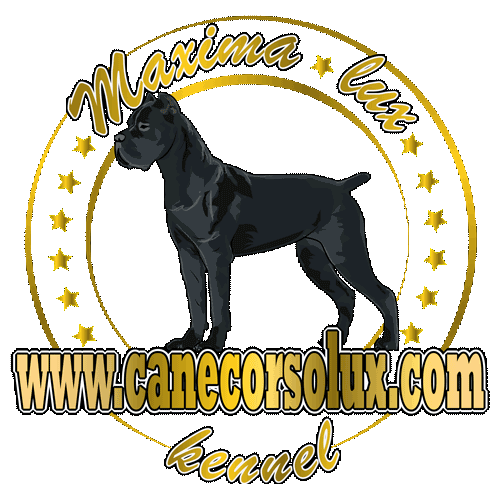Hip Dysplasia
Hip dysplasia is one of the most significant health issues of large dog breeds. It is a multifactorial abnormal coxofemoral joint development characterized by joint laxity and subsequent degenerative joint disease. The main factors that influence the occurrence of hip dysplasia are excessive growth, nutrition, exercise, and hereditary factors. Hip dysplasia occurs due to the difference between hip joint muscle mass and the rapid development of bones. This health issue may later cause osteoporosis, thickened femoral neck, combined capsule fibrosis, acetabular bone sclerosis, and subluxation or luxation of the femoral head. The average hip is the mechanism that functions according to the “key-lock” kind of relationship that provides stability. The hip joint is an indispensable mechanism that allows the mobility and transfer of power from the muscles of the hind legs to the body. That is the basis of speed and power.
Symptoms and treatments of hip dysplasia
The symptoms of the disease depend on the age of the animal. In dogs younger than 3 months, it is possible to complete the absence of clinical signs, but such a puppy may show the first signs of unusual walking due to hip instability. It is important to understand that some individuals are more resistant than others, and not everyone shows the same symptoms. Therefore, the observation side can’t be given an adequate assessment of whether a dog is suffering from this disease. Clinical examination doubted this disease, but again, not in all individuals. An X-ray machine is the only way to exclude hip dysplasia and determine the degree completely. Treatments can be both medical and surgical. Nonsurgical candidates should have a weight reduction, exercise restriction or exercise on hard surfaces, and use of anti-inflammatory drugs or fluid modifiers.
Panosteitis
Panosteitis is a self-limiting disease that primarily occurs in young dogs (ages from a few weeks up to two years, sometimes even after that age) and medium- to large-breed dogs. The disease affects the long tubular bones of limbs (ulna, radius, humerus, tibia, and femur) and begins in the alimentary canal. The disease is of unknown etiology and not hereditary, but a genetic predisposition may exist. There are various theories of disease; some say the blood vessels are abnormal, metabolic diseases, allergic conditions, excessive secretion of female sex hormones, and parasite migration. Clinical examination and X-ray imaging are two methods for making diagnoses. Clinical notes can vary in degrees of lameness. The disease “moves” from one foot to the other (more often affects front feet) and can be hidden for a while. The only therapy that can be used is avoiding excessive dietary supplementation in growing dogs and using opioids, corticosteroids, and oral NSAIDs.

BLOAT: Gastric Torsion
Dilatation and torsion (extension and rotation) of the stomach is a disease that occurs only in large-breed dogs. The disease usually occurs in dogs between the ages of two and ten. This disease’s real cause is unknown, although the dogs have a genetic predisposition. It is suspected that the main problems are in the anatomy and position of organs in the region and in gastric motility-affected dogs. Physical activity and dog dieting may be predisposing factors for the occurrence of this disease. The first symptoms that the owner can notice when the dog suffers from dilatation of the stomach are that the dog suddenly becomes moody, has breathing issues, gets upset, looks scared and sad, and is weak and discouraged. Soon, the dog can start vomiting and notice the contractions in the abdominal muscles. If the owner does not respond quickly and does not take the dog to the vet, it can die very soon after the onset of noticeable symptoms. The owner must describe all the changes and symptoms observed in the dog to the vet and tell the vet what the dog has eaten, when it had the last meal, whether it was training or walking, and how its walking behaved. Anti-shock therapy is the first step in treating dogs suffering from bloat or gastric dilatation. The dog immediately connects to the infusion, and the veterinarian decides which medication to apply to anti-shock therapy. The next step is the treatment of reducing the pressure in the stomach. If possible, the veterinarian will release gas from the dog’s stomach.
Abnormalities affecting the Eye:
Entropion is a disorder of the eyelid position in dogs. In this disorder, the edges of the eyelid twist to the eyeball. When the eyelid twists, eyelashes and hair irritate the cornea, leading to significant problems with a dog’s eyes. The causes of this phenomenon can be genetic or neurological. Entropion usually occurs in both eyes (upper and lower eyelids). Most often, it can be seen in dogs aged six months. The main symptoms that can show your dog has these health issues are eye rubbing, pain, and constant irritation. These symptoms can lead to severe eye damage, reports of secondary eye diseases, and even vision loss. The dog should be taken to the vet immediately when the owner notices these symptoms. The most effective method for treating this problem is surgery. The vet will apply antibiotic treatment if there is a secondary infection in twisting the eyelid. Ectropion is also a disorder of the eye where the lower eyelid rolls down and away from the eye, exposing the inner eyelid tissue. Treatment for mild ectropion generally consists of medical therapy, such as lubricating eye drops and ointments to prevent the cornea and conjunctivae from drying out.
Cherry-eye
The third eyelid has dogs, cats, and even humans. In humans, that’s the tiny white triangle in the corner of the eye, at the root of the nose, which is wholly stunted in the evolutionary process. In dogs, it is an integral part of the eye and consists of cartilage in the form of the letter T on both sides, coated with mucous membranes. Problems in the third eyelid include inflammation, physical damage, and falling off the eyelid, known as” Cherry eye”. Falling off the third eyelid is quite noticeable, thanks to its distinctive look. It usually appears as a red ball the size of a pea protruding from the eye. Clinical examination can identify prolapse of the third eyelid, and surgical treatment is available. Plastic surgery removes only part of the third eyelid, which was knocked out, and the rest attaches to the lower eyelid. The surgery is relatively routine, but it requires expertise by a veterinarian.
Canine Demodicosis
D. canis, Demodex injai (a large-bodied mite), and Demodex cornei (a short-bodied mite) are frequently responsible for this disease.
The disease can be challenging to manage because of the length of treatment. It can be localized or generalized, and the prognosis and treatment options can vary because of the form of the disease. The localized form involves up to six focal areas of the body, and the generalized form is more severe and involves more than six areas. If the dog’s immune system is sensitive, mites can reproduce quickly, so if you notice your dog has some of these symptoms, it’s best to take him to the vet.
Epilepsy
Canine epilepsy is an uncontrolled burst of electrical activity in a dog’s brain, and it’s often genetic. There are three types of epilepsy in dogs: reactive, secondary, and primary. If the dog has some metabolic issues like low blood sugar or kidney or liver problems, it may have reactive epileptic seizures. SA brain tumor or a stroke can cause secondary epileptic trauma, and the last type is yet to be discovered. Using antiepileptic drugs can prevent epilepsy because there isn’t a total cure for it.





